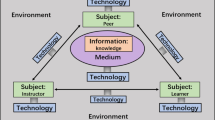Abstract
THE GOAL OF THIS PROJECT is to develop a unique simulation environment that can be used to increase students’ in terest and expertise in Computer Science curriculum. Handson experience with physical or simulated equipment is an essential ingredient for learning, but many approaches to training develop a separate piece of equipment or software for each topic area. We describe the development of a simulation environment that provides a foundation for cross-disciplinary exercises. The Wireless Intelligent agent Simulation Environment (WISE), which combines activities from virtual and physical versions of the Wumpus World game, provides a dynamic learning environment that can enhance a number of Computer Science courses.
In this paper, we describe the WISE environment design. We also describe steps for integrating WISE into Computer Science curriculum. As a demonstration of the effectiveness of the tool, we describe its use in the artificial intelligence, multimedia, and wireless networks courses at the University of Texas at Arlington.
Similar content being viewed by others
References
Clark, W.M. (1997). Using multimedia and cooperative learning in and out of class. Retrieved October 29, 3003, from http://www.wpi.edu/Academics/Depts/ChemEng/ People/1080.pdf
Graham, C.R., & Trick, T.N., (1998). Java applets enhance learning in a freshman ECE course.Journal of Engineering Education, 87(4), 391–397.
Hanks, S., Nguyen, D., & Thomas, C. (1993).A beginner’s guide to the truckworld simulator. Technical Report 93-06-09, University of Washington.
Holder, L.B., & Cook, D.J. (2001). A client-server computational tool for integrated artificial intelligence curriculum.Journal of Computing in Higher Education, 12(2), 52–69.
Montgomery, T.A, & Durfee, E.H. (1990). Using MICE to study intelligent dynamic coordination.Proceedings of the Second Computer Society International Conference on Tools for Artificial Intelligence, 438–444.
Pollack, M.E., & M. Ringuette (1990). Introducing the tileworld: Experimentally evaluating agent architectures.Proceedings of the National Conference on Artificial Intelligence 183–189.
Reinhardt, A. (1995). New ways to learn.Byte, 20(3), 50–72.
Russell S., & Norvig P. (2003).Artificial intelligence: A modern approach. New Jersey: Prentice Hall.
Vincent, R., Horling, B., & Lesser, V. (2001). An agent infrastructure to build and evaluate multi-agent systems: The Java agent framework and multi-agent system simulator.Lecture Notes in Artificial Intelligence: Infrastructure for Agents, Multi-Agent Systems, and Scalable Multi-Agent Systems, (Vol. 1887).
Yerraballi, R., Zhao, X., & Kanabar, J. “A new asynchronous hybrid mechanism for video on demand,” To appear inProceedings of the 29thEuromicro Conference on Multimedia and Telecommunications, Turkey, 2003.
Author information
Authors and Affiliations
Rights and permissions
About this article
Cite this article
Cook, D.J., Huber, M., Yerraballi, R. et al. Enhancing computer science education with a wireless intelligent simulation environment. J. Comput. High. Educ. 16, 106–127 (2004). https://doi.org/10.1007/BF02960285
Issue Date:
DOI: https://doi.org/10.1007/BF02960285




